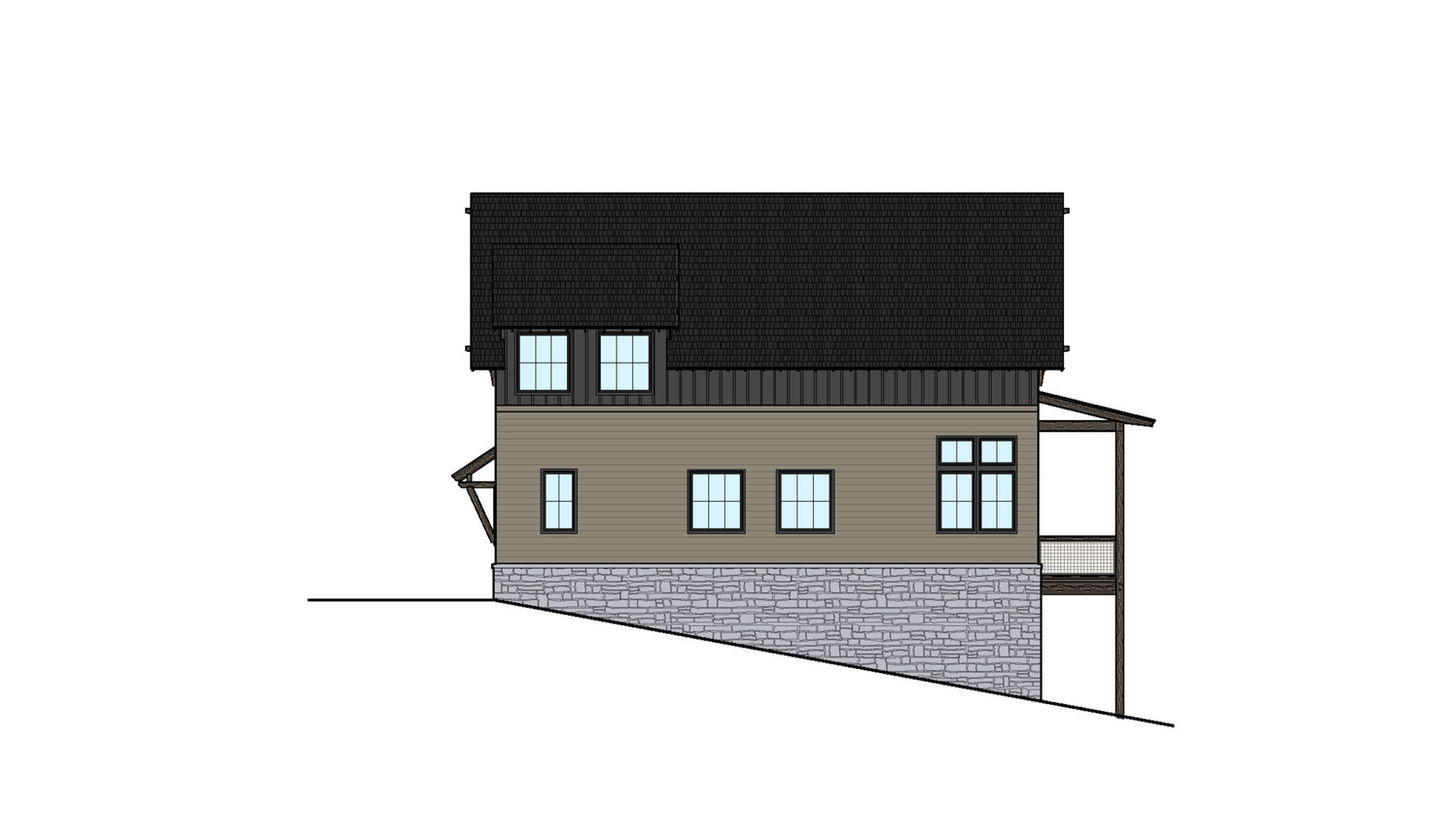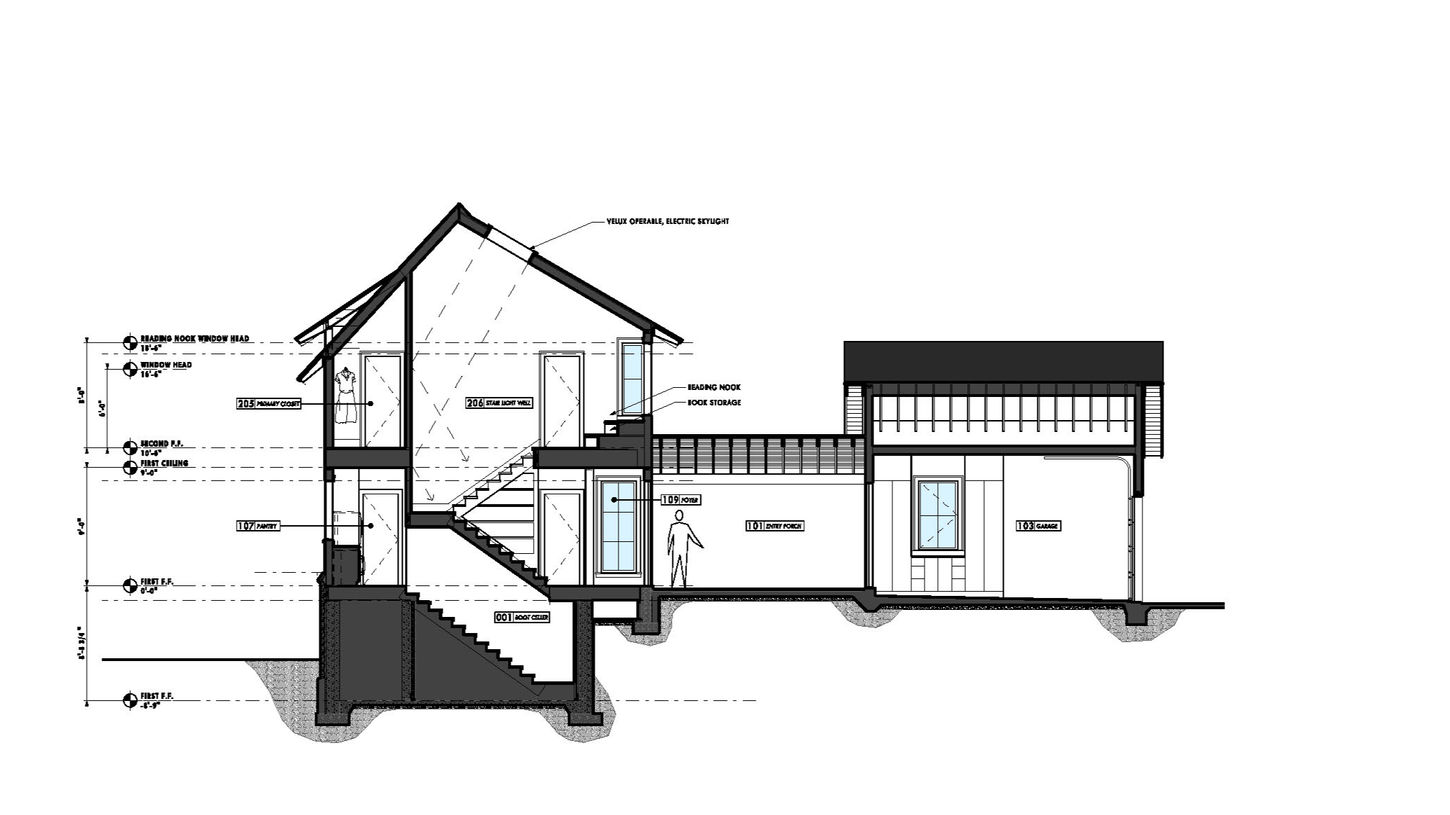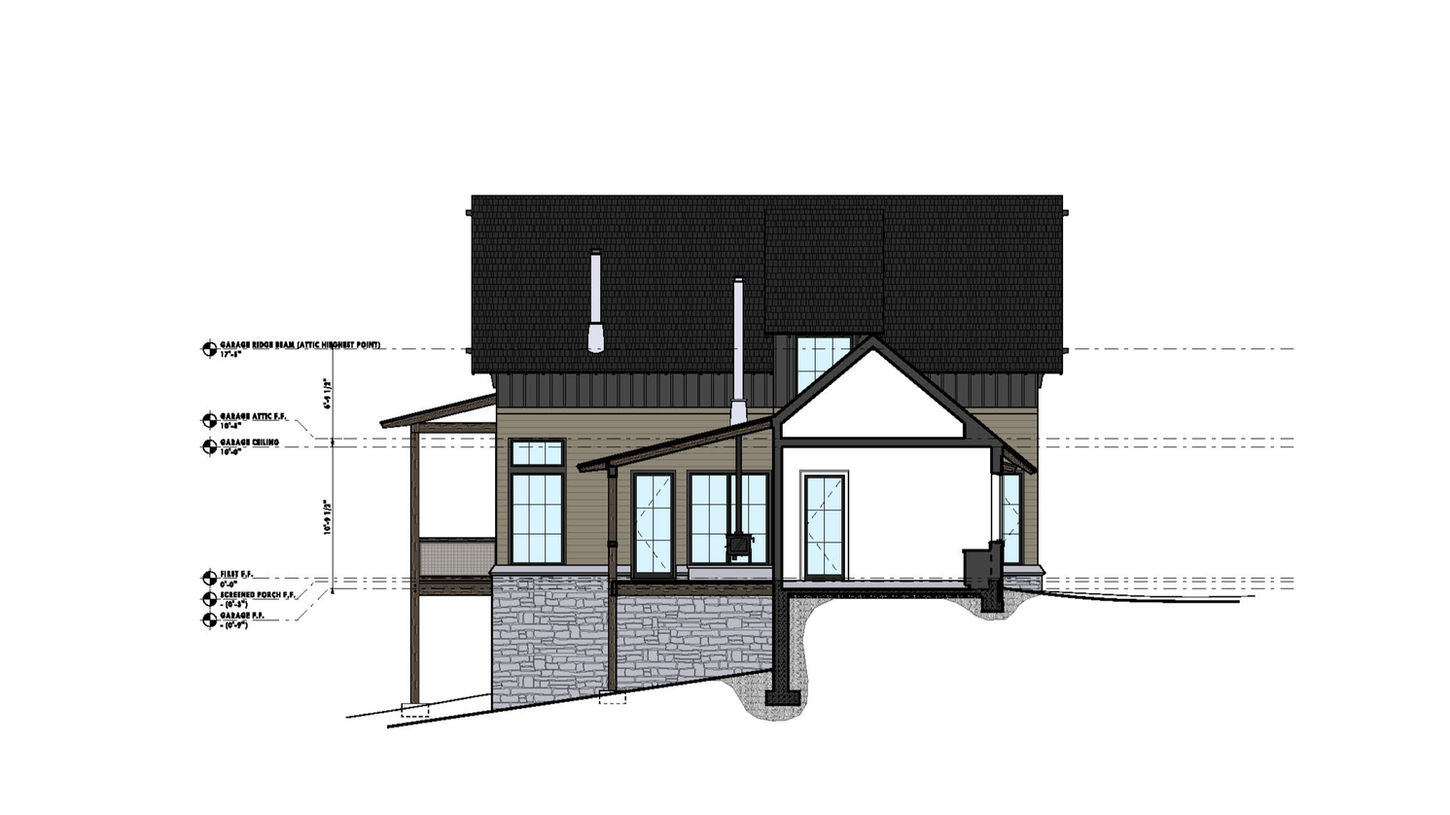
essay 06
HODLing onto the Future:
Designing Homes for the
Long-Term
by bryan jones
_edited.png)
INFO
Privacy Policy
Terms and Conditions
400 Plasters Ave. NE, Suite 225,
Atlanta GA 30324
SITE NAVIGATION
Insert Photo discription here.
essay 06
HODLing onto the Future:
Designing Homes for the Long - Term
by bryan jones
December 09,2024
essay 06
HODLing onto the Future: Designing Homes for the Long-Term
by bryan jones
November 09,2024

Rendering of our 30 yr old client's forever house.

Hand watercolor rendering of one of our current projects.
A Case Study of Personal Architecture at 30
At 30, Mary Elizabeth is now professionally established in a role she loves as a front-of-the-house manager overseeing several brands for a local restaurant group. My long-time client and her parents have gifted her a piece of land near Asheville, North Carolina, and the site infrastructure allowing us to start working with her to build her first personal architecture for the long term.
Ready to start
With a jurisdictional requirement of only 1200 SF and land provided, Mary Elizabeth has the freedom to design a home that truly meets her needs rather than being limited by a required bank value or arbitrary jurisdictional house size requirement. She's brought us some images of smaller cottages to build a 1500 SF home that will accommodate her lifestyle in the long term.
Our interest
Her parents' family gift allows us to study design for the person rather than just meeting a required bank value. We're excited to lean in and learn what an independent 30-something thinks they want in a design for their personal home for long-term use for a simple life. We want to explore how we can design a small house to live big and how the ideas of a smaller/ higher design and construction quality home resonate with the BTC community.
The project brief
-
1500 square feet of heated space
-
Two bedrooms – one owner and one guest.
-
Two baths
-
Laundry/pantry
-
Combination living, cooking, dining room.
-
Screened porch
-
One car garage/mud room to hose oƯ after horse riding.
-
Wood stoves on the porch and house.
-
Root/ storm cellar
-
Work area for crafts
PLAN 01

PLAN 02

IDEAS - Keyed into plans
-
South-facing entry garden: Claim some food-producing garden designed to look like an organized landscape close to your habit trails. Use the fence to keep deer around the house garden as a "fedge" - food-producing hedge. Remember to make the gate to the wall big enough for a UTV - utility task vehicle.
-
Working garden areas: The greenhouse is organized around a work area for wood splitting, bioreactor compost, and biochar production.
-
South-facing covered entry: The covered entry doubles as winter wood storage is stacked on either side of the front entry in Scandinavian style. In the summer, use the outdoor covered area to sit facing the garden in the shade.
-
No front door: Front doors require space around them and tend to trigger social posturing. In this case, the front door is the entrance to the screen porch.
-
Mud capture garage: Combine the mud function and garage to keep the mud in the garage and simplify the house plan.
-
A functional chameleon-covered outdoor space: Use the space as the house entry and circulation from the garage. To block winter wind, position columns to receive storm glass in the column bays. Provide heat on the porch; in this case, a wood stove organizes space for sitting and circulation. Provide large opening doors to the house to open the two spaces and make a combined larger living space when you want it.
-
If the ceilings could talk: Telling a story with the ceiling heights is a subtle way to let smaller spaces live bigger. In this case, the ceilings are the same height as lower porch ceilings when entering the house, and they make the dining area feel cozy while adding some interest by compressing people at the door and then letting the space expand over the seating areas.
-
Windows on two walls: Even though a ginormous window faces the big view, we still locate a window next to it on the corner. The light is more dynamic in the room throughout the day, and it feels good.
-
Edgy public spaces: Locate the public functions of the kitchen, lounge, and eating area in one space by combining functions along two adjacent walls. In this case, a banquet dining area sits next to the core stairs, and the kitchen cabinets are on one wall. The other two walls are left for windows, art, and a TV if you want such things. The open space is organized by the windows for the seating area and kitchen island.
-
Places to hide: Open public spaces should always have another space to store stuƯ. In this case, we located the laundry pantry and are using the space for circulation for day and night guests to access the bathroom and provide a circulation path around the stair core. Going in another direction is always good at a party, even in a small house.
-
Secure storage: In the pantry, we have basement access through what looks like a storage cabinet under the stairs. In this case, we have a slope under the living area, which allows a basement we can use for a root cellar, storm protection, the solar inverter/batteries, heat pump water heater, ventilation equipment, safe area, indoor grow area, and air handlers if we are not using wall mini splits. We also like the idea of a steel door outside the basement for secure access.
-
Smooth floor guest bath: Minimize the size of the guest bath by recessing the framing to provide a shower floor that slopes to the drain. A 1950 post-WWII style 5 x 8-foot bath can feel OK with no curb on the floor, and you have corner-opening casement windows to create the outdoor shower experience. Yes, you can use vinyl windows, so a shower has a view.
-
Stair as stage: This is a Pattern Language idea from Christopher Alexander. Residential stairs only need rails on one side, allowing people to sit on the stairs and lean against the wall. In this case, the stairs are a core element in the house plan.
-
Flexible guest bedroom space: We like guest bedrooms to have access to the public spaces when you go to bed, letting the living room double as a guest suite. I also like sliding doors that open to the garden. Think about cabinet-style closets that provide drawers, some hanging space, and a counter like a hotel so that you can be a good host.
-
Open space at the top of the stairs: We like to have some flexible open space at the top. Sometimes, it is another sitting area to expand the owner's space out of the bedroom. It can be a place for a piece of exercise equipment. In this case, it is a project area for crafts with space for material storage and tray storage to have multiple projects going on simultaneously.
FRONT ELEVATION

GARAGE ELEVATION

SECTION THROUGH PORCH

SECTION THROUGH PORCH

BACK ELEVATION

BACK ELEVATION

Mary Elizabeth's house address features aligned with BTC principles:
Allows owners to think on longer time horizons.
Allows for a density of design thought.
Providing a return on investment beyond money.
Designing strategically to minimize the government's power to increase taxes on the assets.
Let me know what you think! I'd love to hear any suggestions or insight to help our research on what uses and features the first-time buyer wants with a longer horizon perspective.
We commit to writing about what we learn and how this design could change as we design Asset Architecture projects for the HODLers who want them.
HODL on…
SEE HOW THIS ONGOING PROJECT IS EVOLVING
A Case Study of Personal Architecture at 30
At 30, Mary Elizabeth is now professionally established in a role she loves as a front-of-the-house manager overseeing several brands for a local restaurant group. My long-time client and her parents have gifted her a piece of land near Asheville, North Carolina, and the site infrastructure allowing us to start working with her to build her first personal architecture for the long term.
Ready to start
With a jurisdictional requirement of only 1200 SF and land provided, Mary Elizabeth has the freedom to design a home that truly meets her needs rather than being limited by a required bank value or arbitrary jurisdictional house size requirement. She's brought us some images of smaller cottages to build a 1500 SF home that will accommodate her lifestyle in the long term.
Our interest
Her parents' family gift allows us to study design for the person rather than just meeting a required bank value. We're excited to lean in and learn what an independent 30-something thinks they want in a design for their personal home for long-term use for a simple life. We want to explore how we can design a small house to live big and how the ideas of a smaller/ higher design and construction quality home resonate with the BTC community.
The project brief
-
1500 square feet of heated space
-
Two bedrooms – one owner and one guest.
-
Two baths
-
Laundry/pantry
-
Combination living, cooking, dining room.
-
Screened porch
-
One car garage/mud room to hose oƯ after horse riding.
-
Wood stoves on the porch and house.
-
Root/ storm cellar
-
Work area for crafts
PLAN 01

PLAN 02

IDEAS - Keyed into plans
-
South-facing entry garden: Claim some food-producing garden designed to look like an organized landscape close to your habit trails. Use the fence to keep deer around the house garden as a "fedge" - food-producing hedge. Remember to make the gate to the wall big enough for a UTV - utility task vehicle.
-
Working garden areas: The greenhouse is organized around a work area for wood splitting, bioreactor compost, and biochar production.
-
South-facing covered entry: The covered entry doubles as winter wood storage is stacked on either side of the front entry in Scandinavian style. In the summer, use the outdoor covered area to sit facing the garden in the shade.
-
No front door: Front doors require space around them and tend to trigger social posturing. In this case, the front door is the entrance to the screen porch.
-
Mud capture garage: Combine the mud function and garage to keep the mud in the garage and simplify the house plan.
-
A functional chameleon-covered outdoor space: Use the space as the house entry and circulation from the garage. To block winter wind, position columns to receive storm glass in the column bays. Provide heat on the porch; in this case, a wood stove organizes space for sitting and circulation. Provide large opening doors to the house to open the two spaces and make a combined larger living space when you want it.
-
If the ceilings could talk: Telling a story with the ceiling heights is a subtle way to let smaller spaces live bigger. In this case, the ceilings are the same height as lower porch ceilings when entering the house, and they make the dining area feel cozy while adding some interest by compressing people at the door and then letting the space expand over the seating areas.
-
Windows on two walls: Even though a ginormous window faces the big view, we still locate a window next to it on the corner. The light is more dynamic in the room throughout the day, and it feels good.
-
Edgy public spaces: Locate the public functions of the kitchen, lounge, and eating area in one space by combining functions along two adjacent walls. In this case, a banquet dining area sits next to the core stairs, and the kitchen cabinets are on one wall. The other two walls are left for windows, art, and a TV if you want such things. The open space is organized by the windows for the seating area and kitchen island.
-
Places to hide: Open public spaces should always have another space to store stuƯ. In this case, we located the laundry pantry and are using the space for circulation for day and night guests to access the bathroom and provide a circulation path around the stair core. Going in another direction is always good at a party, even in a small house.
-
Secure storage: In the pantry, we have basement access through what looks like a storage cabinet under the stairs. In this case, we have a slope under the living area, which allows a basement we can use for a root cellar, storm protection, the solar inverter/batteries, heat pump water heater, ventilation equipment, safe area, indoor grow area, and air handlers if we are not using wall mini splits. We also like the idea of a steel door outside the basement for secure access.
-
Smooth floor guest bath: Minimize the size of the guest bath by recessing the framing to provide a shower floor that slopes to the drain. A 1950 post-WWII style 5 x 8-foot bath can feel OK with no curb on the floor, and you have corner-opening casement windows to create the outdoor shower experience. Yes, you can use vinyl windows, so a shower has a view.
-
Stair as stage: This is a Pattern Language idea from Christopher Alexander. Residential stairs only need rails on one side, allowing people to sit on the stairs and lean against the wall. In this case, the stairs are a core element in the house plan.
-
Flexible guest bedroom space: We like guest bedrooms to have access to the public spaces when you go to bed, letting the living room double as a guest suite. I also like sliding doors that open to the garden. Think about cabinet-style closets that provide drawers, some hanging space, and a counter like a hotel so that you can be a good host.
-
Open space at the top of the stairs: We like to have some flexible open space at the top. Sometimes, it is another sitting area to expand the owner's space out of the bedroom. It can be a place for a piece of exercise equipment. In this case, it is a project area for crafts with space for material storage and tray storage to have multiple projects going on simultaneously.
FRONT ELEVATION

GARAGE ELEVATION

SECTION THROUGH PORCH

SECTION THROUGH PORCH

BACK ELEVATION

BACK ELEVATION

Mary Elizabeth's house address features aligned with BTC principles:
Allows owners to think on longer time horizons.
Allows for a density of design thought.
Providing a return on investment beyond money.
Designing strategically to minimize the government's power to increase taxes on the assets.
Let me know what you think! I'd love to hear any suggestions or insight to help our research on what uses and features the first-time buyer wants with a longer horizon perspective.
We commit to writing about what we learn and how this design could change as we design Asset Architecture projects for the HODLers who want them.
HODL on…
SEE HOW THIS ONGOING PROJECT IS EVOLVING
_edited.png)
INFO
Privacy Policy
Terms and Conditions
400 Plasters Ave. NE, Suite 225,
Atlanta GA 30324
SITE NAVIGATION
November 09, 2024















